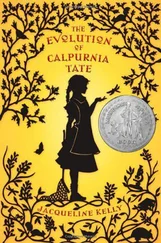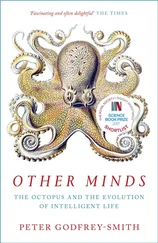In the earlier period, when agrarian units were still small they were worked by citizen-soldiers, frequently helped by slaves. Hesiod in Greece (about 700 B.C.) and Cincinnatus in Italy would be examples of such farmers. The story of how Cincinnatus was summoned from his plow to be dictator of Rome when it was attacked by the Aequi in 458 B.C. and how he returned to his work after a victorious sixteen-day campaign is significant on two counts. It shows the amateur and temporary status of Roman soldiers at this early period, and it shows that an important citizen worked in the fields himself.
By 200 B.C. the citizen-soldier and the family-size farm were both beginning to vanish from Italy. The ravages of Hannibal in his invasion of Italy during the Second Punic War (218-201 B.C.) had destroyed buildings, equipment, and livestock beyond the ability of the ordinary peasant to replace them. Moreover, these peasants had been away from their farms for years and had difficulty returning to the onerous routine of peasant life. The overseas conquests resulting from the war required a permanent standing army. This was recruited from the uprooted peasants of Italy. The farms of these displaced peasants were purchased by war profiteers or larger landlords who had made money from war contracts or war booty and were in a position to buy the ravaged Italian farms, combine them into large estates, and equip them with buildings and livestock from their wartime profits. The captives taken in the war provided slaves with which these new estates could be worked.
This process was encouraged by a number of other factors. In Sicily, which had been annexed from Carthage in 240, and in Africa, which was acquired forty years later, the Romans found a functioning agrarian system based on large estates. These were copied in Italy and, later, in Spain in accordance with the methods of the Carthaginian agricultural writer Mago, whose works were translated into Latin in the second century B.C. The Roman government was unable to pay off the debts incurred during the Second Punic War except by alienating public lands to the speculators and profiteers who were the chief creditors. Other public lands were transformed into latifundia by tenancy or by simple usurpation. Once Sicily and Africa were acquired, Italy found it difficult to compete with these new territories in raising grain. Accordingly, the farm lands of Italy were shifted from grain to the production of olive oil, wool, and wine. Grain could be raised on both large and small farms and by persons who had large or small amounts of capital. Olives and wool could be raised only on large holdings and only by persons with considerable capital. Thus the shift from family farms to great estates was encouraged in Italy by the shift from grain to olives and wool.
One last but important factor in this change to large estates was the fact that landownership carried an appearance of aristocracy and social prestige, since the nobility were by law excluded from commerce, and restricted their economic activities to agriculture. As a result, every parvenu who made money in commerce, industry, speculation, or war contracts sought to win public sanction of his rise in the social scale by acquiring a large estate—the larger, the better. In this way many persons with no direct knowledge or interest in farming became owners of latifundia worked by slaves in charge of a steward. In consequence there grew up a pattern of ostentatious display of landed luxury, great debts, and separation of management from ownership.
This new pattern of agrarian organization created a demand for slaves that could hardly be satisfied. No slave system has ever been able to continue to function on the slaves provided by its own biological reproduction because the rate of human reproduction is too slow and the expense from infant mortality and years of unproductive upkeep of the young make this prohibitively expensive. This relationship is one of the basic causes of the American Civil War, and was even more significant in destroying ancient Rome. The normal method for supplying the slave needs of Classical antiquity was by sales of war captives. But even this was not sufficient to meet the demand. It was, however, sufficient to make war an endemic element in Roman life. The supply of slaves had to be supplemented by other means. The senate, which was the chief organ of government and in control of the landed rather than of the commercial classes, permitted piracy to flourish in the Mediterranean because it supplied captives to the slave marts. This continued until the middle of the first century B.C. when the revolutionary threat from the discontented to break up the latifundia forced the owners of these estates to seek support from the commercial groups by wiping out piracy that preyed on commerce. The ease with which piracy was suppressed by Pompey in 67 B.C. is evidence of the lack of effort made in this task earlier.
The supply of slaves was also increased by systematic plundering of the Roman provinces and the territories of allied states. Cicero tells us that each provincial governor had to return after his brief rule with three fortunes peculated from the province: one went to pay the bribes that had obtained his appointment, a second went to obtain acquittal from the charges brought against him on his return, and the third was for himself. A similar behavior was found among lesser provincial officials, especially the tax collectors, who often left an area ruined and depopulated.
Allied territories were not treated much better than provinces. About 104 B.C. Marius called upon the allied King Nicomedes of Bithynia to provide auxiliary troops for services against the Cimbri. The king replied that he was unable to do so because of the depopulation of his country by the slave raiding of Roman officials. When this message reached Rome, the senate ordered that enslaved freeborn citizens of Roman allies who were being held in Roman provinces should be freed, but after eight hundred were freed in Sicily within a few days, the landlords were able to exercise sufficient political pressure to stop execution of the decree.
As a consequence of such methods the number of slaves increased greatly in the period of the late republic, and the danger of slave revolts increased accordingly. William L. Westermann and Tenney Frank agree that at least 250,000 war captives were enslaved in the first fifty years of the second century B.C. Livy tells us that 70,000 slaves participated in the Sicilian slave revolt of 135 B.C.; 20,000 were armed by the rebels in the Social War in 90 B.C.; while Spartacus, who refused help from many, led 120,000 against the city in 72 B.C. In 37 B.C. Octavius Caesar trained 20,000 slaves obtained from his supporters to be oarsmen in his struggle with Sextus Pompeius, and, after his victory, he restored to their owners 30,000 slaves who had been serving with his defeated opponent.
This great increase in the number of slaves after 250 B.C. did not reflect any increase in their productive use. On the contrary, all the evidence indicates that larger and larger numbers were used in quite nonproductive activities: attending their masters, lolling about urban residences, or carrying letters and packages. Moreover, between Cato (who wrote his De Agri Cultura about 160 B.C.) and Varro (who wrote his Rerum Rusticarum about 37 B.C.) there was a definite shift from a rigorous profit motivation to a more humane and leisurely attitude toward slaves.
Even on the land itself there was a decrease in efficiency. The shift of managerial decisions from an owner on the spot who had a personal interest in efficiency to a freeman overseer who had no such interest does much to explain the mechanism by which the slave-based agricultural system changed from instrument to institution. The owner, of course, had a personal concern in increase of output because each increase accrued to him. But an overseer had an interest in a stable output year by year, something quite different.
Читать дальше










